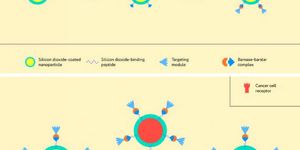I Say Black Holes, You Say Wormholes
In a recent paper in the journal Physical Review D, a group of European physicists have raised an unorthodox yet intriguing hypothesis about the origin of recently detected events of gravitational waves: instead of colliding black holes, they argued that the close contact between two highly compact objects such as wormholes could have caused the far-reaching ripple of the space-time fabric.
In 2016, scientists at LIGO (Laser Interferometer Gravitational-Wave Observatory, the world famous scientific collaboration dedicated for the detection of gravitational waves) announced that they made the first ever detection of gravitational wave. Many astrophysicists believe that the wave signal was caused by the merging of two black holes, which are among the most massive and compact objects in the universe.
But some remain highly skeptical on how the LIGO data should be interpreted. Because the concept of black holes, more precisely the edge of a black hole formally known as event horizon, violates an important doctrine in quantum physics. An event horizon is a region in spacetime often described as the "points of no return", i.e., the boundary at which the gravitational pull is so strong that not even light can escape. However, in modern physics the value of a wave function should remain unchanged at different junctions in time, meaning the information should never be lost. (This is also known as the black hole information paradox, a puzzle resulting from the combination of quantum mechanics and general relativity.)
Therefore, after the release of LIGO’s 2016 report, a number of physicists proposed that gravitational wave could just be the result of the collision of other super dense objects such as the gravasters (objects made of dark energy) or even wormholes. These exotic objects do not have an event horizon and would thus no create the same paradox as the black holes.
What’s worth mentioning is that not all gravitational waves signals were pointed toward black holes. So far LIGO has detected a total of six incidents of gravitational waves, of which the first five were associated with the possible merger of black hole pairs. The latest event, with simultaneous optical signals observed by conventional telescopes, scientists have confirmed its cause as the collision of two neutron stars.
In the latest simulation study, the Belgium and Spanish physicists hypothesized that those first five events of gravitational waves could have been caused by the collision of two rotating wormholes. According to them, the collision would launch a ripple across the space-time continuum, leaving “echoes” in the signal. Therefore, the astrophysics community should work on listening to these “echoes”. If the waves were caused by black holes merging, the wave signals would have discontinued completely and left no oscillation behind because of the presence of the event horizon. But the “echoes” would act as a clear differentiating element.
"The confirmation of echoes in the LIGO or Virgo signals would be a practically irrefutable proof that astrophysical black holes don't exist," says Pablo Bueno the lead author of the report and a physicist at the University of Leuven. "Time will tell if these echoes exist or not. If the result were positive, it would be one of the greatest discoveries in the history of physics," he added.
Could Wormholes Really Exist? (SciShow Space)
Source: phys.org










